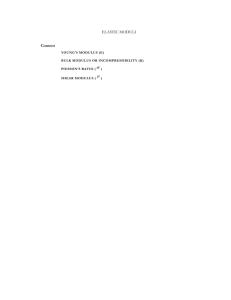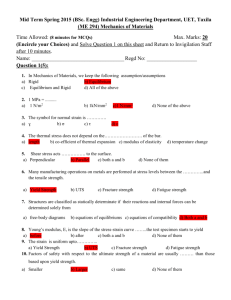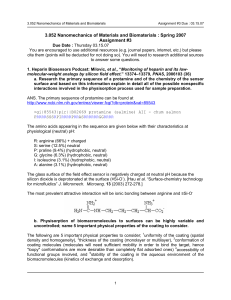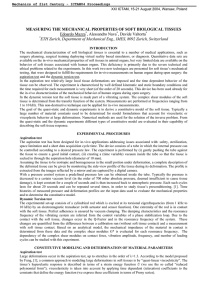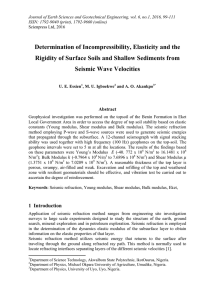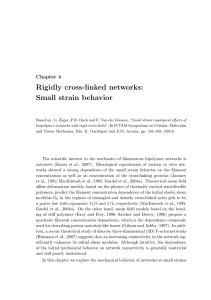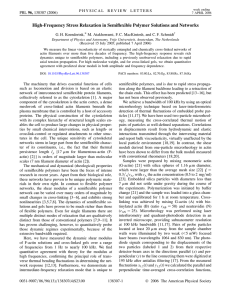Solutions – Problem set 2
advertisement
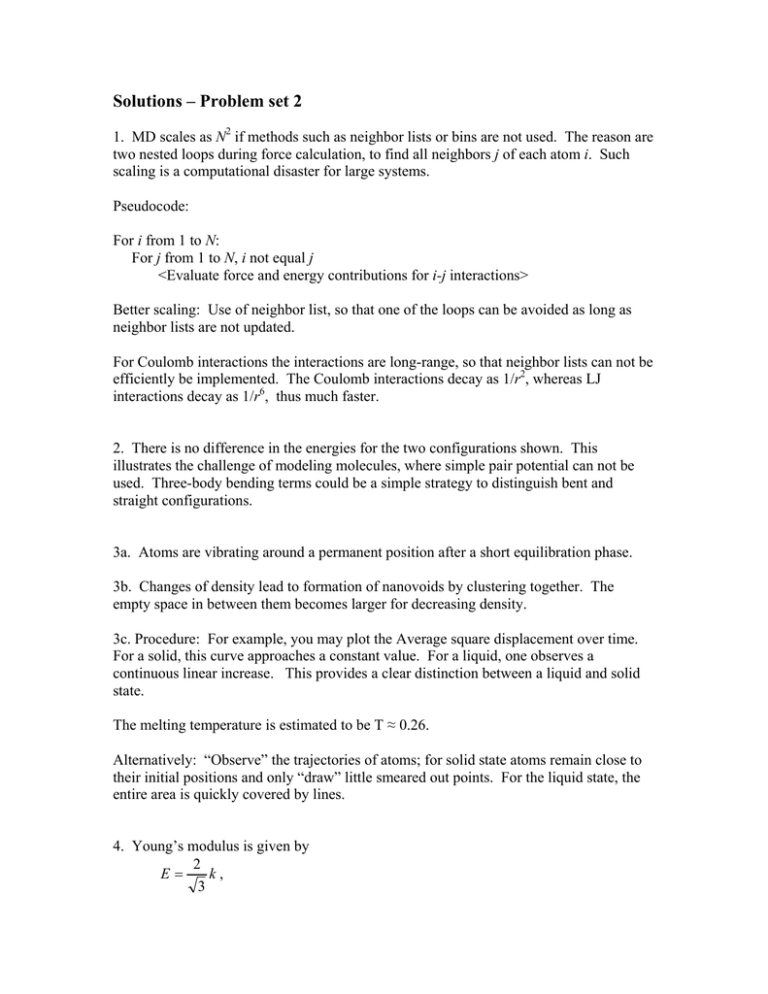
Solutions – Problem set 2 1. MD scales as N2 if methods such as neighbor lists or bins are not used. The reason are two nested loops during force calculation, to find all neighbors j of each atom i. Such scaling is a computational disaster for large systems. Pseudocode: For i from 1 to N: For j from 1 to N, i not equal j <Evaluate force and energy contributions for i-j interactions> Better scaling: Use of neighbor list, so that one of the loops can be avoided as long as neighbor lists are not updated. For Coulomb interactions the interactions are long-range, so that neighbor lists can not be efficiently be implemented. The Coulomb interactions decay as 1/r2, whereas LJ interactions decay as 1/r6, thus much faster. 2. There is no difference in the energies for the two configurations shown. This illustrates the challenge of modeling molecules, where simple pair potential can not be used. Three-body bending terms could be a simple strategy to distinguish bent and straight configurations. 3a. Atoms are vibrating around a permanent position after a short equilibration phase. 3b. Changes of density lead to formation of nanovoids by clustering together. The empty space in between them becomes larger for decreasing density. 3c. Procedure: For example, you may plot the Average square displacement over time. For a solid, this curve approaches a constant value. For a liquid, one observes a continuous linear increase. This provides a clear distinction between a liquid and solid state. The melting temperature is estimated to be T ≈ 0.26. Alternatively: “Observe” the trajectories of atoms; for solid state atoms remain close to their initial positions and only “draw” little smeared out points. For the liquid state, the entire area is quickly covered by lines. 4. Young’s modulus is given by 2 E= k , 3 where k = φ '' is the second derivative of the LJ potential with respect to r, evaluated at r=r0, which can easily be written as a function of the parameters σ and ε. The shear modulus is given by µ= 3 k. 4 The elasticity coefficients cijkl are given by c1111 = ∂ 2 Φ(ε ij ) ∂ε 11∂ε 11 ∂ 2 Φ(ε ij ) c1122 = ∂ε 11∂ε 22 = c2222 = = ∂ 2 Φ(ε ij ) ∂ε 22 ∂ε 22 = 3 3 k , 4 3 k, 4 and c1212 = ∂ 2 Φ(ε ij ) ∂ε 12 ∂ε 12 = 3 k. 4 We note that c1212 = c1122 , which is called the Cauchy relation. This condition is a consequence of the pair potential assumed to describe the energies of the atomic bonds, and it is not satisfied in most real solids. We note that in the expression for σ 12 = ∂Φ (ε ij ) ∂ε 12 =k 3 (ε 12 + ε 21 ) 4 we include the fact that always ε 12 = ε 21 , so that the shear modulus relating shear strain to shear stress is two times c1212 . The coefficient c1212 appears twice when we calculate σ 12 , for example, since σ 12 = c12 kl ε kl and ε kl = ε lk . Poisson’s ratio is defined as the ratio between lateral and tensile strain (uniaxial tension in the x-direction), ν =− ε 22 . ε 11 Poisson’s ratio is ν = 1/ 3 . The material is isotropic for small deformation, since Young’s modulus for pulling in the x- and y-direction are identical.


